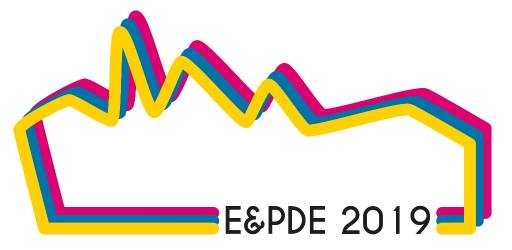Type:
Year:
2019
Editor:
Bohemia, Erik; Kovacevic, Ahmed; Buck, Lyndon; Brisco, Ross; Evans, Dorothy; Grierson, Hilary; Ion, William; Whitfield, Robert Ian
Author:
Series:
E&PDE
Institution:
Nottingham Trent University, United Kingdom
Section:
Changing Innovation Landscapes 2
DOI number:
ISBN:
978-1-912254-05-7
Abstract:
From the age of 5-18, UK children are taught in a specific, prescriptive and grade-driven manner, imposed upon them by a rigid, competence-driven National Curriculum, which actively suppresses both creativity and innovation. With 14 years of education behind them, students often find the academic progression from A-Level education (Key Stage 5) to Higher Education (HE) (National Qualifications Framework Level 4 (NQF4) problematic. This is a particularly prominent issue with students of design and other such creative pursuits, due to the non-prescriptive nature of their chosen field(s), coupled with the fact that the number of students undertaking Art Foundation Year study has reduced significantly in recent years. Therefore, the purpose of this paper is to assess the efficiency of a Framework for Academic Progression (FAP), which has been used to facilitate a smoother progression from school to university study. The aforementioned framework was created specifically to change both design thinking and methodologies.
Considering the cognitive bias of students when they embark upon HE at NQF4 and how their experiences have shaped their mind-set, it is no surprise that they arrive at university with inflexible thought processes and a somewhat superficial view of design. In other words, students are descriptively strong, but critically and analytically weak, which is the antithesis of what is required; namely an open mind, a spirit of inquiry, a self-starter approach, and, if possible, a significant work ethic. These standard variables are a prerequisite for academia and industry. They also promote innovation and independence as it is a part of the journey to becoming a designer, embodying an advanced and mature approach to design.
It is problematic to measure the success of the (Stewart/Arthur) FAP in a quantitative fashion. Thus, a series of structured interviews were conducted across five specific demographics; namely A-Level Product Design students (Key Stage 5) and academics, 1st year BA (Hons) Product Design students (NQF4) and academics, and 2nd year BA (Hons) Product Design students (NQF5). The resultant student feedback from the aforementioned interviews was positive. The addition of a core skills syllabus that runs alongside studio and contextual activities dramatically improved student confidence, engagement and, most notably, grades; demonstrating that the (Stewart/Arthur) FAP succeeds in ensuring a comfortable crossing from A-Level to HE is completed, inclusive of easing anxiety concerning the unexpected and facilitating the answering of questions in the key stage of students’ educational careers.
Keywords:





